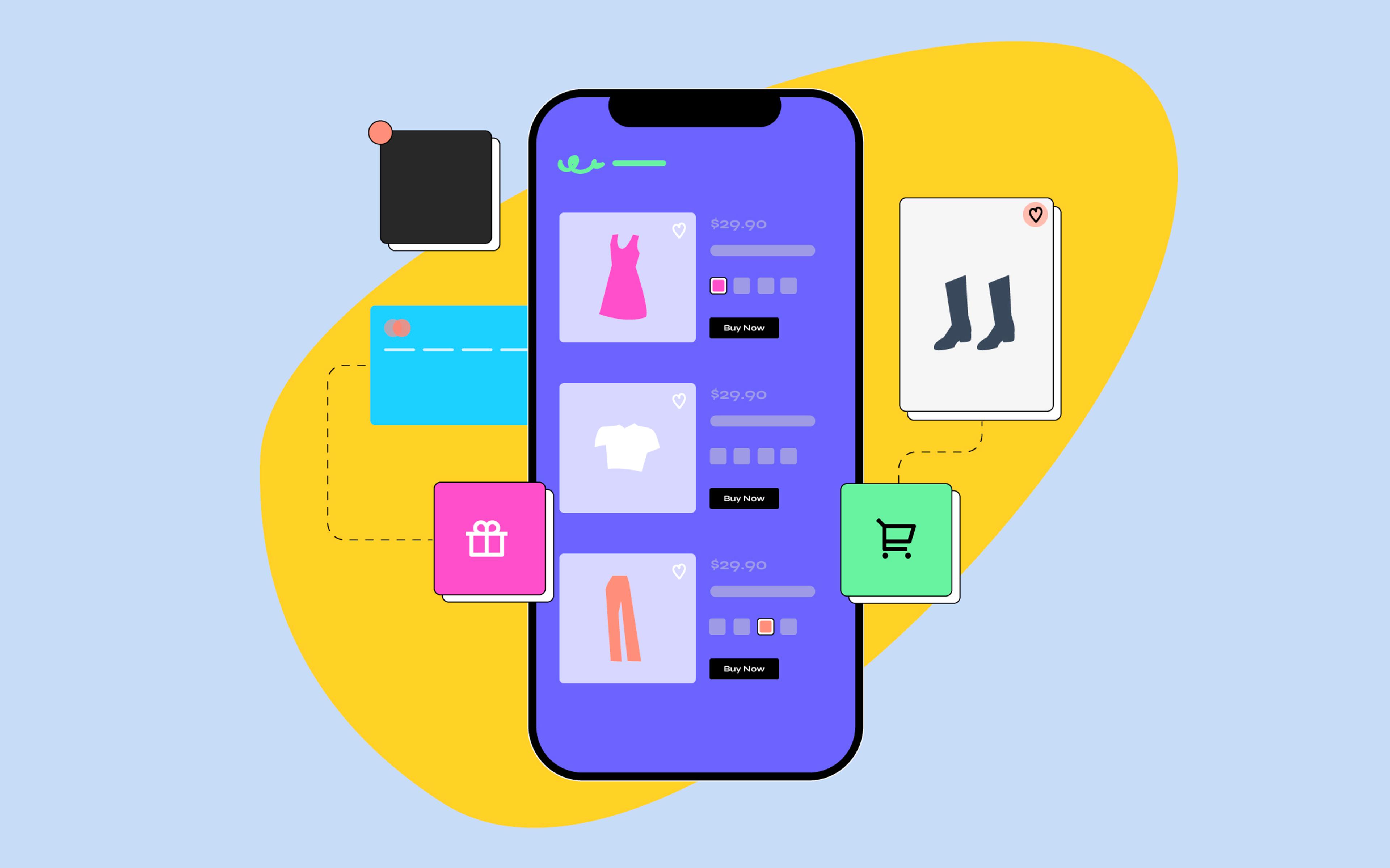If you operate a retail brand today, you should pursue an omnichannel marketing and distribution strategy. And if you’re pursuing an omnichannel strategy, you should at least consider launching a mobile application for your online business. The benefits of eCommerce mobile apps are very alluring:
- They make it easier to identify return customers, providing richer, deeper opportunities for personalizing the customer experience.
- They allow you to send push notifications to your users. That’s a real-time, high-engagement, fully-owned marketing channel–and it’s free, too.
- They offer your customers a faster, more convenient online shopping experience, making for higher conversion rates, better retention, and larger baskets.
However, mobile apps are not for all brands: depending on what type of app you want to build, the financial investment can be significant. The more you want your app to act as a customer acquisition driver, the more expensive it will be to build and operate. And ironically, brands that need acquisition-focused apps are usually the ones with the least money to spend on them, which makes this a complex juggling act.
The goal of this guide is two-fold: we want to provide you with all the context you need to make this decision in the most informed and balanced way possible, and if you decide to move forward, we want to offer practical tips to design and build an eCommerce app that will delight your customers while pursuing your business goals.
Transactional Apps Drive Lifetime Value
If we asked the average user to picture a mobile app for an eCommerce brand they like, they would probably copy-paste the brand’s online store into a native UI, ending up with a shopping app that simply serves as an additional sales channel. We typically refer to these as “transactional apps” because their only purpose is to facilitate transactions between a brand and their customers.
While there’s nothing wrong with transactional apps per se, you should know that this is not the only type of app you can build–although it’s the easiest. Transactional apps are incredibly useful if you already have significant brand equity or a high repeat purchase rate and want to get more value from your existing customers. By providing a better, more user-friendly shopping experience than your other channels and potentially your competitors, you can improve your conversion rate, average order value, and repeat purchase rate.
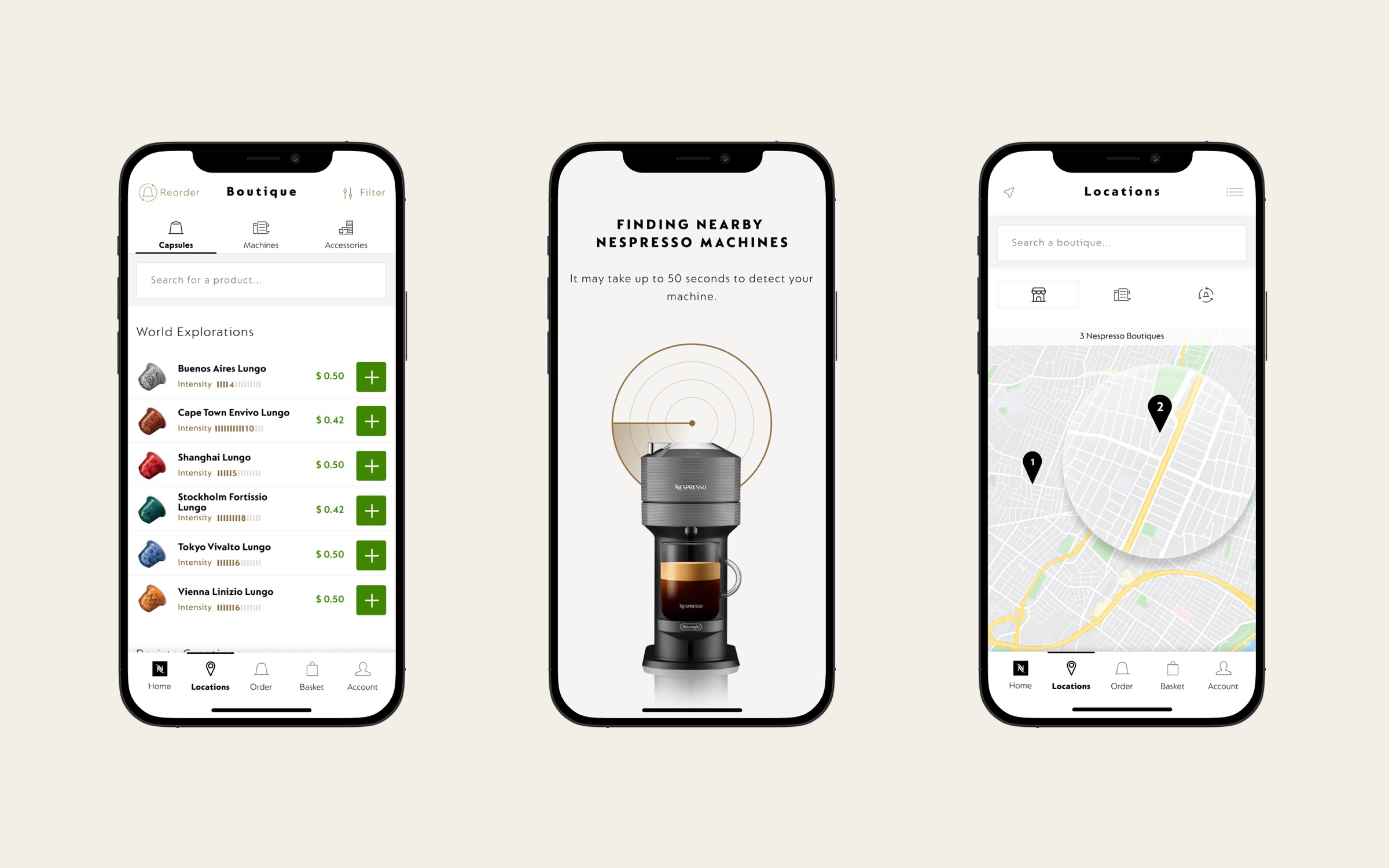
What a transactional app can’t help you with is customer acquisition. Anyone who shops through a transactional app should be considered a high-intent customer and would have likely shopped with you anyway, although their orders might have been a bit smaller or less frequent in other channels.
One of the most popular transactional apps is Nespresso’s mobile app: it allows you to place orders, manage your Nespresso subscription, and manage your Nespresso coffee machine, all without opening their website. The app does a great job of eliminating any friction in the shopping experience, increasing repeat purchase rate and average order value for all existing Nespresso customers.
Experiential Apps Drive Customer Acquisition
We’ve seen that transactional apps boost your customer lifetime value, not your acquisition rates. Does that mean you shouldn’t build a mobile eCommerce app if you’re focused on customer acquisition? Not quite–it just means your goal should be to build an app that’s experiential rather than transactional.
Experiential apps take the concept of an eCommerce app a step further. Rather than simply facilitating a transaction your customers can already complete on your website, experiential apps provide value in and of themselves. This can come in the form of exclusive content, a community, or a tool/service that is relevant to your physical product(s). These apps effectively become part of your brand identity rather than being another sales channel.
The idea behind experiential apps is to build brand awareness and capture low-intent customers by providing them with free, immediate value, only nurturing and converting them at a later stage. It’s a much longer-term bet than launching a transactional app but it can also pay off huge dividends over time. Experiential mobile apps are one of many ways you can pursue a Product-Led Growth strategy.
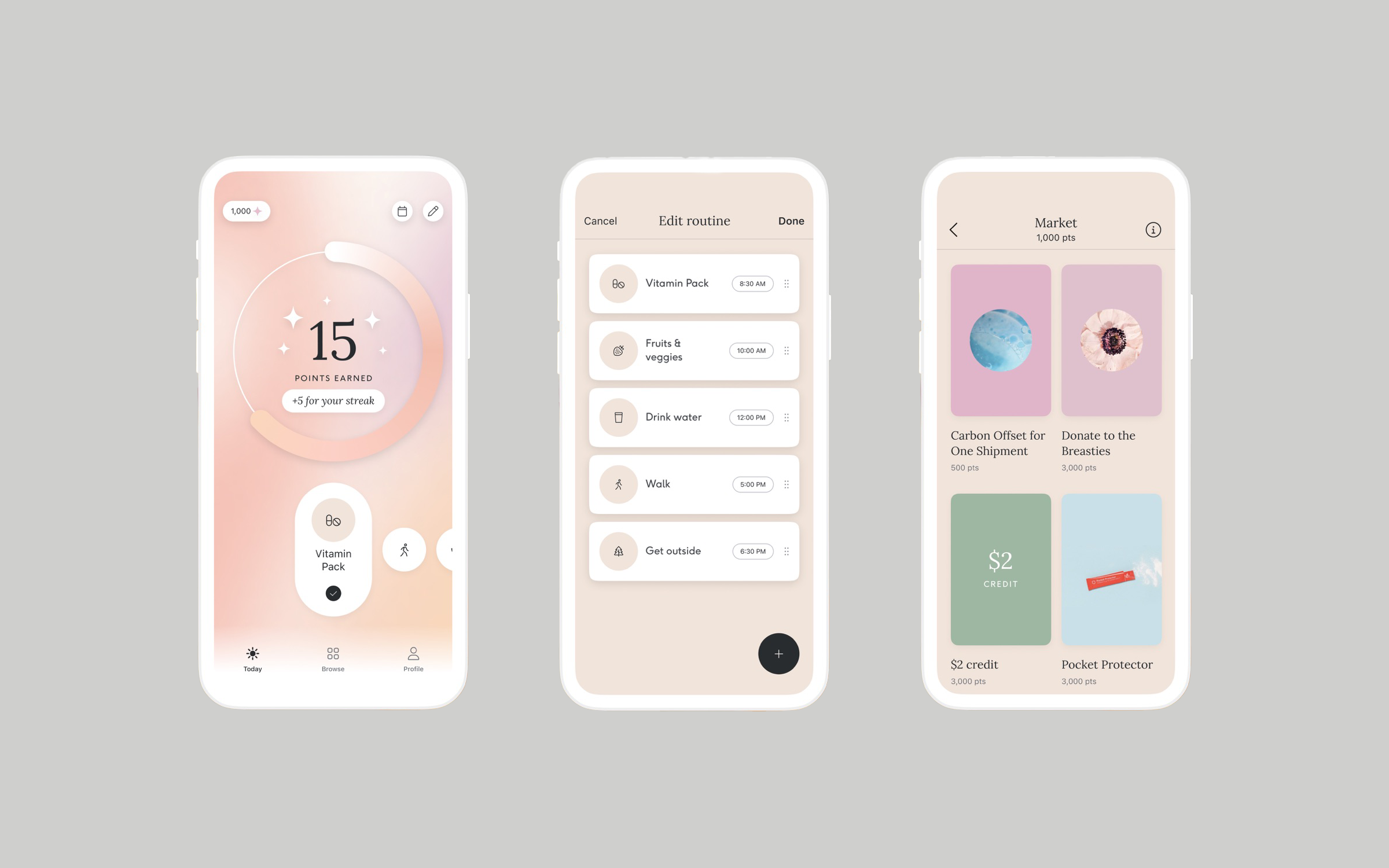
Note that most experiential apps also offer transactional capabilities, allowing you to kill two birds with one stone: high-intent customers can use your mobile shopping cart to buy from you, while low-intent shoppers can use the experiential features to explore your brand at their own pace–and eventually convert into paying customers.
Personalized vitamin brand Care/of recently released an app that is equal parts transactional and experiential: the app sends you reminders and allows you to track your vitamin intake, as well as keep track of your daily habits. By performing these actions, you earn points, which you can redeem for free rewards–the perfect entry point into Care/of’s world. At the same time, existing customers can use the app to manage their Care/of subscription.
Greenfield Builds vs. App Builders
Once you have a clear idea of what kind of app you want to build, you need to decide how you want to build it. While your tech team or mobile app development agency might have strong opinions over which tech stack they want to use, it’s essential to be aware of the implications of your choices.
Traditionally, mobile apps have been built from scratch, using technologies such as Swift (which is specific to iOS) or React Native (which allows you to power cross-platform native apps with a single codebase).
Building your app from scratch is basically the equivalent of writing your own checkout code, and it has many of the same advantages and limitations. It gives you tremendous flexibility to build whatever app you have in mind–which is fantastic if you’re launching an experiential app–but it also requires a significant investment and technical know-how.
A greenfield app will take anywhere between 8 and 12 weeks and cost you $50-100K, depending on your agency/tech team composition. These apps also tend to be more expensive to operate and maintain over time.
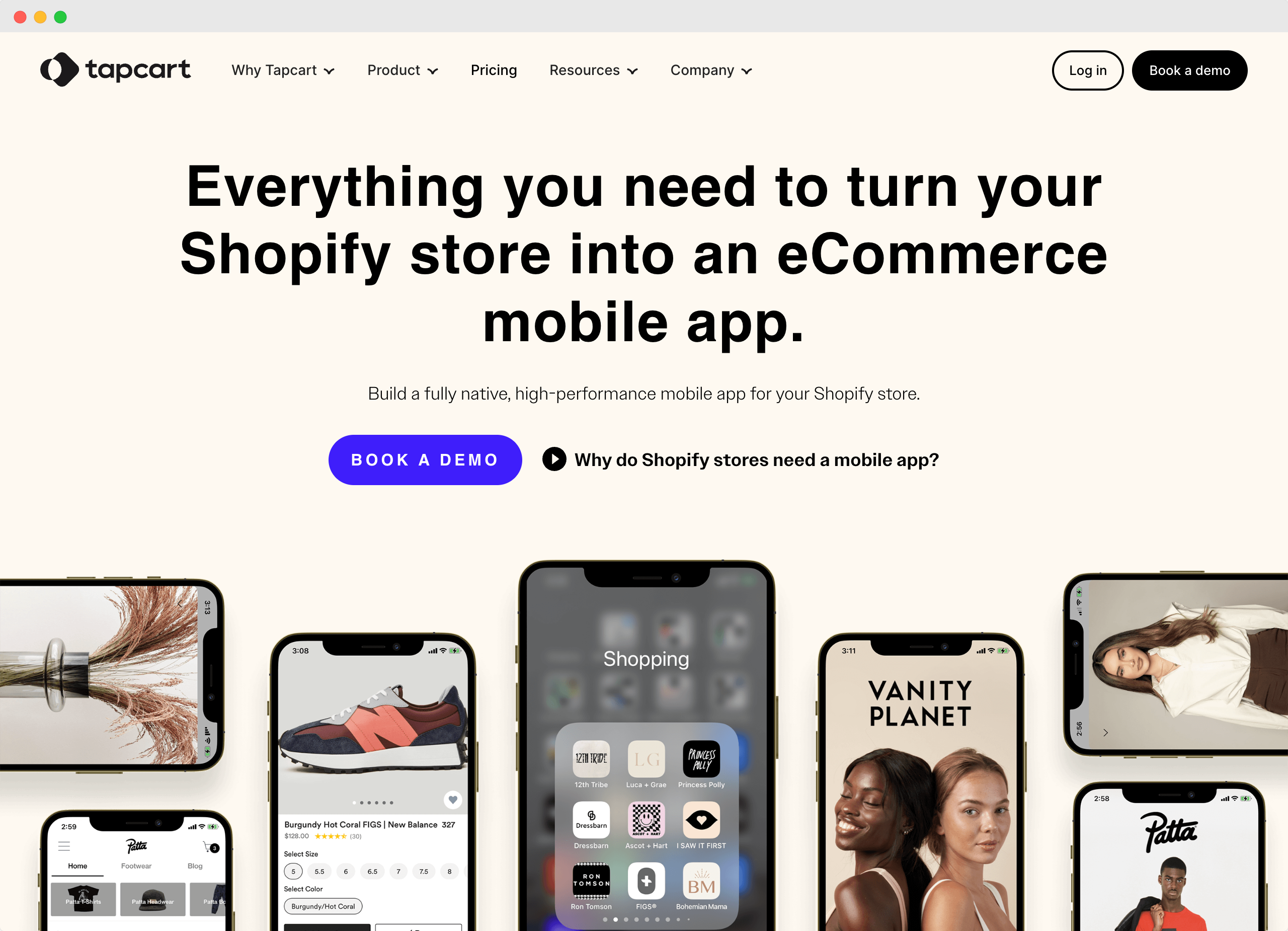
The alternative to a greenfield build is to use an app builder. Over the last years, several startups have emerged that offer a much cheaper and quicker way to launch a mobile app than building it from scratch: you simply connect them to your Shopify store or other eCommerce platform, customize your app by using a drag-and-drop interface that allows you to reuse predefined templates, and click a button to have your app published in the Apple and Android app stores.
App builders are especially popular in the eCommerce domain, because the user experience of purchasing a product online tends to be very repeatable. Launching an app with one of these tools can take as little as two weeks, and pricing is usually fairly accessible. Tapcart, for example, is the most popular app builder for Shopify and starts from $300/month.
However, these tools have a downside: because you need to operate within the constraints of your app builder, you are much more limited in terms of the functionality you can implement. This makes app builders a terrible choice for experiential apps, where you want the app to stand out and capture your customers’ attention.
What Type of App Should You Build?
Ultimately, there’s no one-size-fits-all answer: whether to build a transactional or experiential app depends on your eCommerce store’s stage, customer profile, business model, tech savviness, and a thousand other factors that are pretty complex to account for.
In general, if you want to drive customer acquisition and have the resources, you should go with an experiential app. It’s your best shot at capturing customers that are interested in what you have to offer but might not be ready to shop with you just yet.
However, if your primary goal is to create a low-friction sales channel for your mobile users, you should likely build a transactional app instead. It will give you the best bang for your buck, increasing customer satisfaction, repeat purchase rate, and basket size.
Tracking Your Mobile App’s Performance
What KPIs to track for your mobile app depends on the type of app you’re building: tracking the performance of an experiential app will look very different from monitoring the performance of a transactional app, since the goals are fundamentally different (acquiring customers vs. increasing LTV).
However, you should always track both product metrics and business metrics:
- Product metrics measure how well the app itself is performing. How many users are downloading your app? How often are they opening it? What’s the average session length? What are the biggest points of friction?
- Business metrics measure how well your app is moving the business forward. How many paying customers is your app generating? What’s the AOV of an app order vs. a mobile/desktop website order?
To answer these questions, you need to make sure your app is instrumented correctly to capture this data. While this will come for free with app builders, you’ll need to be much more intentional about analytics when building an app from scratch.
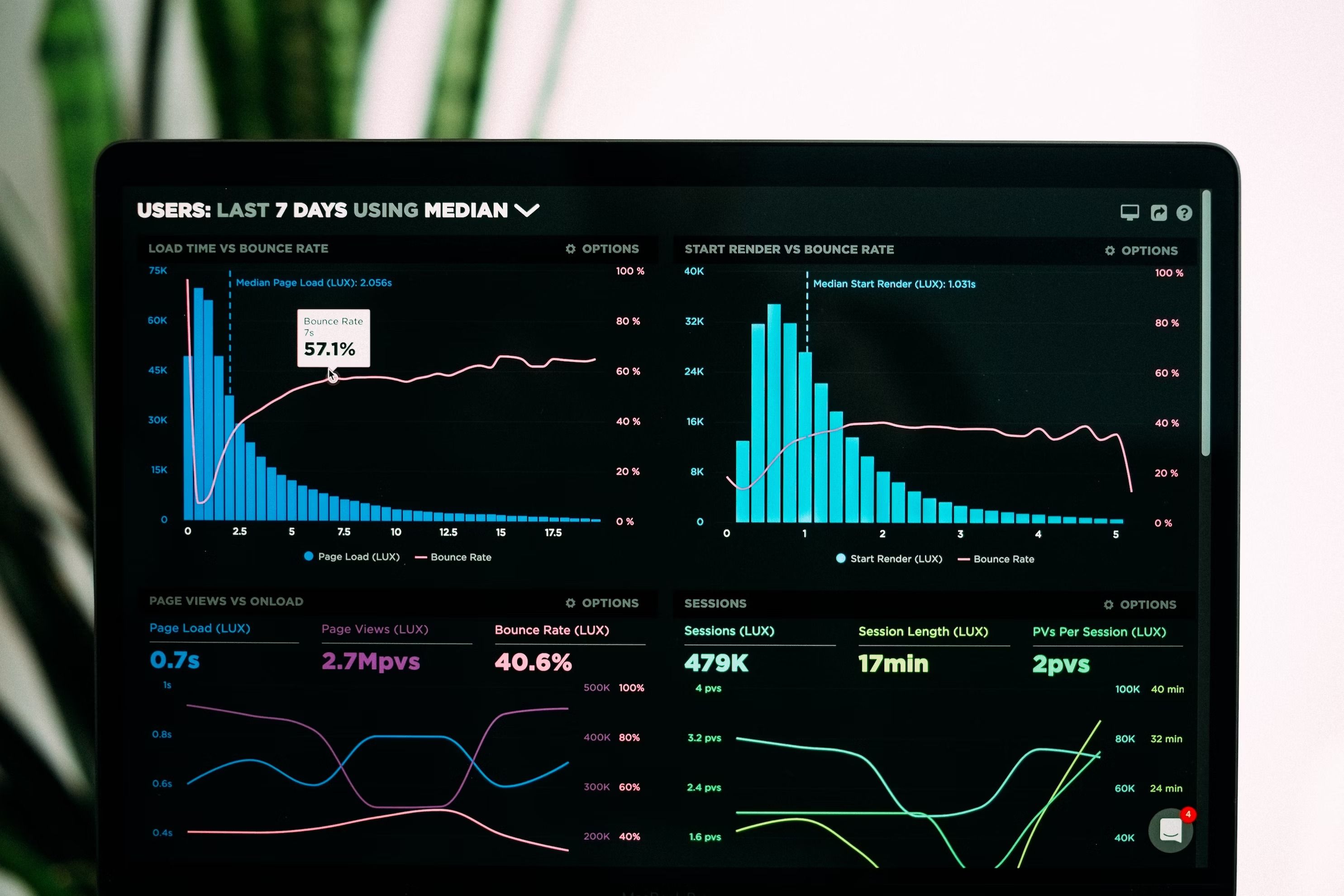
Finally, a note of caution: especially when building a transactional app, you should be mindful that mobile app customers are a unique segment, and you can’t draw one-to-one comparisons with your general customer population.
For example, you might be tempted to compare your average in-app conversion rate to your average on-site conversion rate, but that’s a pretty useless insight: almost by definition, your mobile app users are much higher-intent than your website users since they went through the pain of finding and downloading your app. The fact that your app’s conversion rate is 2X your website’s conversion rate doesn’t really mean anything.
Ideally, you want to compare metrics across customer segments that are as similar as possible (e.g., highly-engaged customers that regularly shop online vs. in-app) to ensure you’re assessing your app’s performance fairly.
Ready to Launch Your App?
We’ve just provided a high-level overview of what it takes to design and build a mobile app for your eCommerce business. As you’ve seen, it’s a project that can have incredible benefits but also requires a clear, upfront understanding of your motivations.
If you’re unsure whether a mobile app–or what kind of app–is right for you, we’re here for you! Feel free to reach out for a free consultation with our brand strategists, and we’ll help you make the best choice for your brand.

